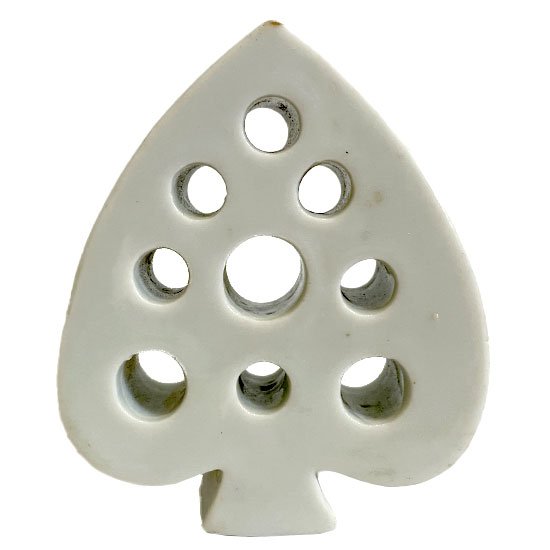 Image 1 of 6
Image 1 of 6

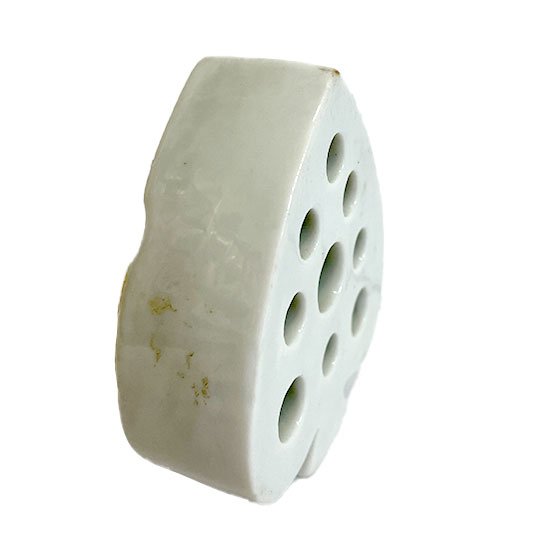 Image 2 of 6
Image 2 of 6

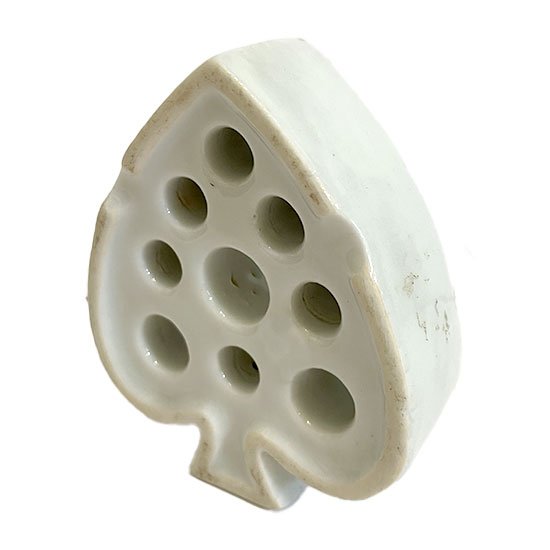 Image 3 of 6
Image 3 of 6

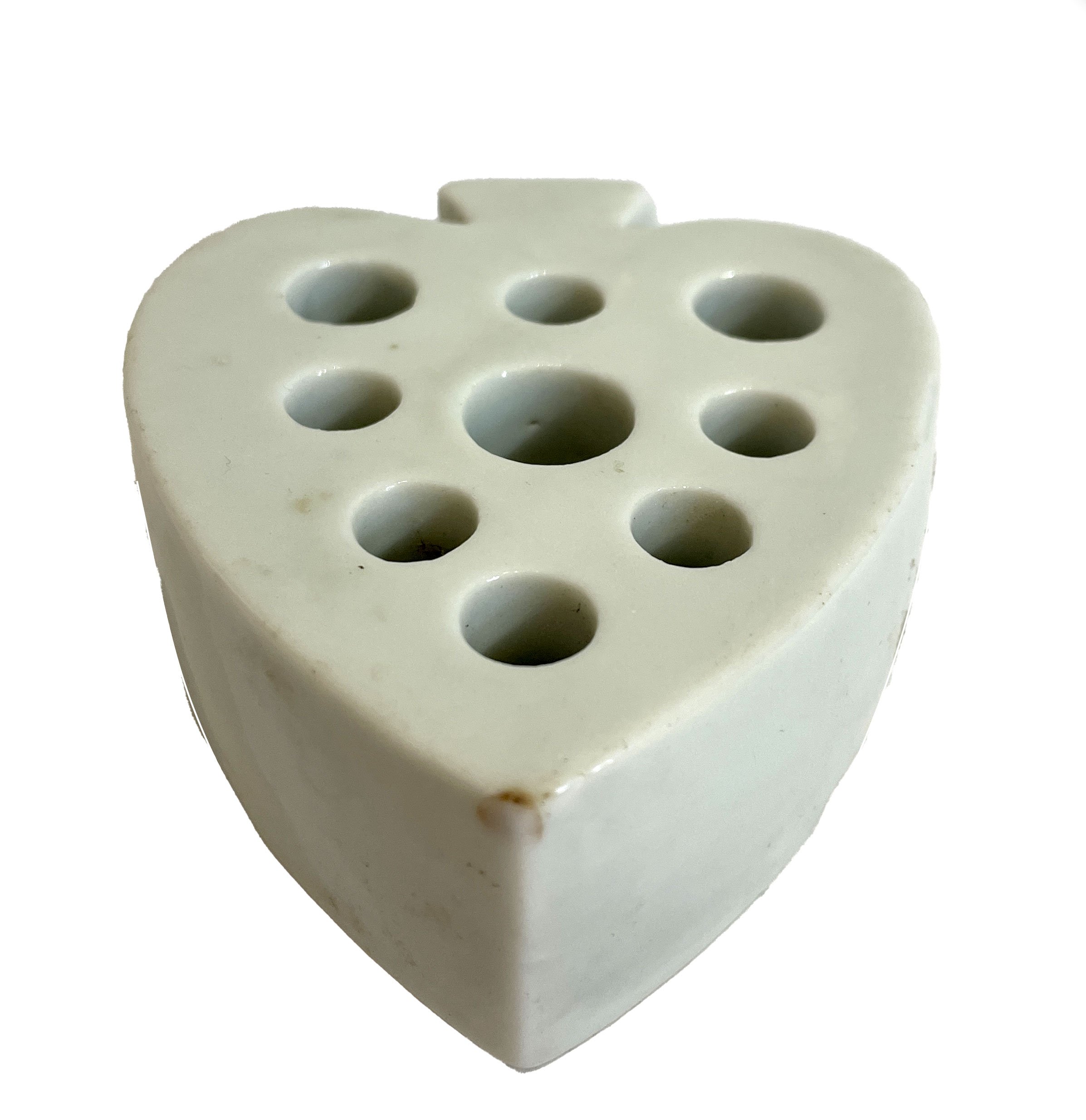 Image 4 of 6
Image 4 of 6

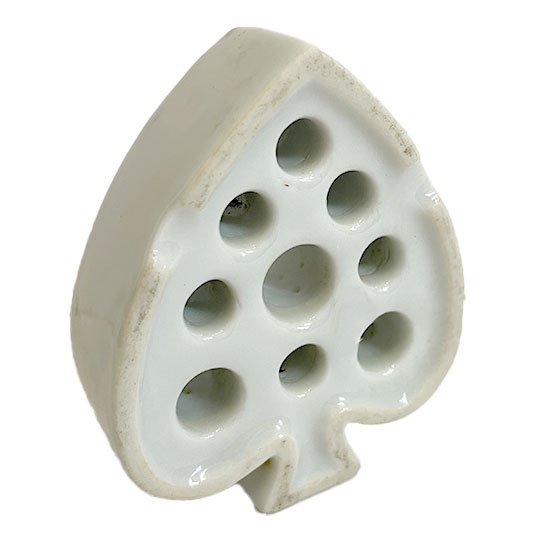 Image 5 of 6
Image 5 of 6

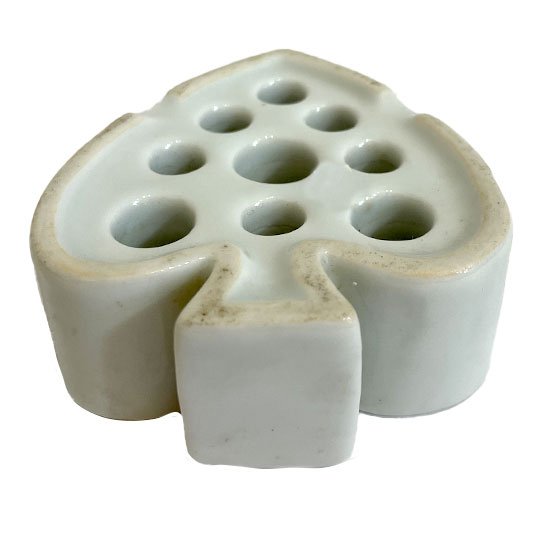 Image 6 of 6
Image 6 of 6







White Porcelain Flower Frog
Vintage white porcelain flower frog in the shape of the card suit of spades, with 9 holes, mid-20th Century, 3 ⅛ inches wide, 3 ¾ inches tall, 1 ¼ inches deep.
This “bouquet holder” was probably made to put in a shallow vase so that it would be part of the floral design, the stems of the flowers inserted into the holes to hold flower arrangements in place. “Flower frogs” are so called because like frogs, they sit in water. Originally from Japan, and used for Ikebana (the art of floral arrangement), they came into use in the the West in the late 1880s and gained popularity from the 1900s through the 1970s—and are still employed by florists and flower arrangers today. Flower frogs are made from metal, ceramic, and glass, often in such figurative styles as dancing women, birds and flowers, —and card suits.
Vintage white porcelain flower frog in the shape of the card suit of spades, with 9 holes, mid-20th Century, 3 ⅛ inches wide, 3 ¾ inches tall, 1 ¼ inches deep.
This “bouquet holder” was probably made to put in a shallow vase so that it would be part of the floral design, the stems of the flowers inserted into the holes to hold flower arrangements in place. “Flower frogs” are so called because like frogs, they sit in water. Originally from Japan, and used for Ikebana (the art of floral arrangement), they came into use in the the West in the late 1880s and gained popularity from the 1900s through the 1970s—and are still employed by florists and flower arrangers today. Flower frogs are made from metal, ceramic, and glass, often in such figurative styles as dancing women, birds and flowers, —and card suits.
Vintage white porcelain flower frog in the shape of the card suit of spades, with 9 holes, mid-20th Century, 3 ⅛ inches wide, 3 ¾ inches tall, 1 ¼ inches deep.
This “bouquet holder” was probably made to put in a shallow vase so that it would be part of the floral design, the stems of the flowers inserted into the holes to hold flower arrangements in place. “Flower frogs” are so called because like frogs, they sit in water. Originally from Japan, and used for Ikebana (the art of floral arrangement), they came into use in the the West in the late 1880s and gained popularity from the 1900s through the 1970s—and are still employed by florists and flower arrangers today. Flower frogs are made from metal, ceramic, and glass, often in such figurative styles as dancing women, birds and flowers, —and card suits.
